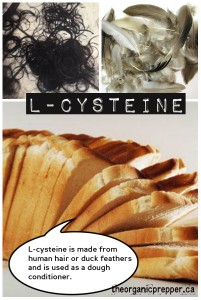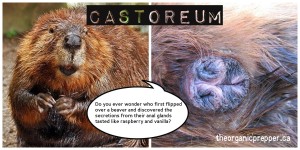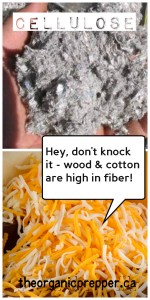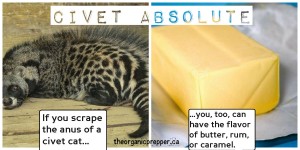Have you ever selected a product at the supermarket and felt virtuous because the ingredients label boasted of “natural coloring” or “natural flavors”? That sure sounds a lot better than those chemical concoctions, right?
Well, maybe not. Just because something is “natural” doesn’t mean you would want to eat it if you knew where it was derived. The items that follow aren’t necessarily harmful, but they really don’t sound very appetizing.
Let’s take a pictorial tour of the real sources of natural colors and flavors
Natural Red #4
Starbucks recently came under fire for their use of “Natural Red #4”, also known as “carmine”. It seems that the Cochineal beetle, originating from Central America, is ground up to provide a luscious pink color to the java chain’s Strawberry Frappuccino. This certainly gives a new meaning to the term “Beetlejuice”.
Castoreum
Beware of those “naturally flavored” vanilla and raspberry items.
They are naturally flavored with secretions from the anal glands of beavers, a substance called “Castoreum [3]“.
L-Cysteine
 [4]
[4]
L-Cysteine [5] is a “natural” dough conditioner that is used in commercial bread and pastry products. 80% of the L-Cysteine used in North America is made from human hair, while the other 20% is made from duck feathers.
Industry insiders report that most of the hair is derived from Chinese women.
Shellac
Shellac [7] is perfectly natural too – don’t worry – it isn’t ground up bugs – it is just the resinous secretions from bugs during their mating cycles, specifically the female lac beetle. Glazed donuts and glossy candy shells owe their shininess to these secretions.
Cellulose
Cellulose [9] is basically sawdust. It is an indigestible substance derived from wood pulp or cotton and is used to keep shredded cheese from clumping together, as well as in ice cream, as an emulsifier. It is also used as a filler, as food companies reduce the actual amount of food in the package.
Food companies like to tout the “high fiber” of foods containing cellulose…um, yeah – you’re eating wood! What they don’t mention is that you receive no nutritional benefits from this “fiber”.
Civet Absolute
What does the food industry use to impart a butter, caramel, or rum flavor to baked goods and sweet treats? Why, scrapings from the anus of the civet cat, of course.
Civet Absolute [11] is not a common additive in North America because of the expense of obtaining it (considering that someone must be paid to scrape the animal’s….you know), but is often used in Asian food manufacturing and is listed as a “natural flavor”. Civet absolute is also an ingredient in several very expensive perfumes.
Because these items would be considered “trade secrets” if divulged, the FDA [12] doesn’t require that they be specifically named. They can just be grouped into the category “natural”. This is yet another reason to eschew processed foods and prepare your meals at home, from pure ingredients.
Here’s a revolutionary idea
If the food industry was truly concerned with providing healthier options, they could make a vast variety of natural colors from things like beets, carrots, and other colorful produce. And perhaps instead of “natural raspberry flavoring” they could just use…you know, raspberries.
This is yet another reason (on an ever-growing list) to eschew processed foods and prepare your meals at home [13], from pure, carefully selected ingredients.



